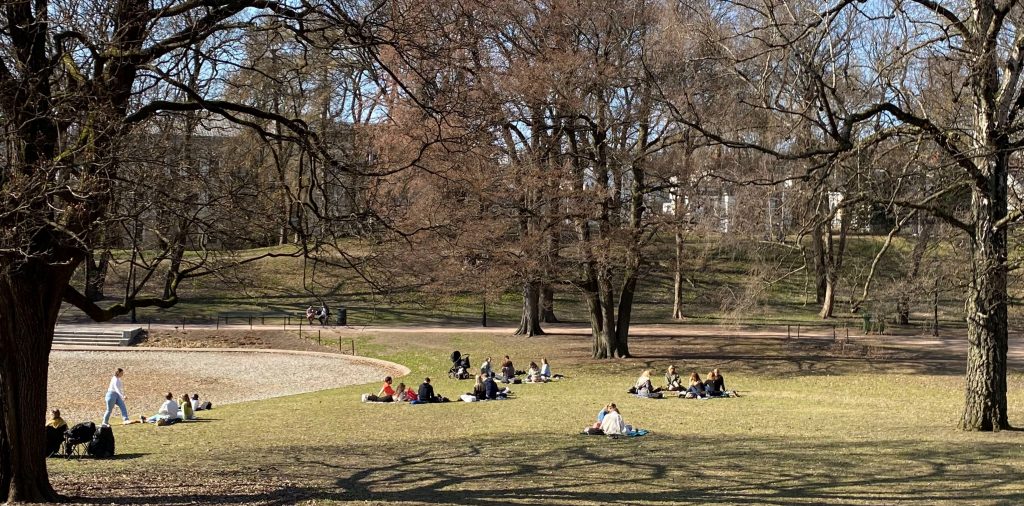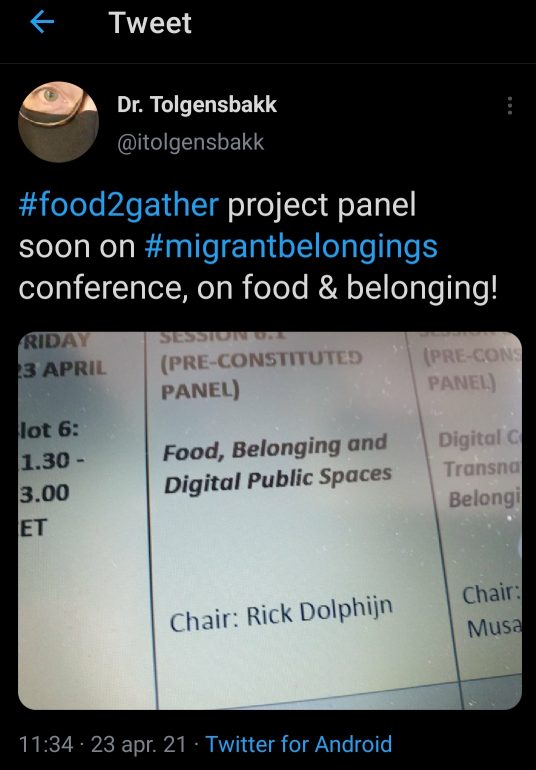Researchers from FOOD2GATHER attended the conference Migrant belongings: digital practices and everyday life this year, which took place digitally 21st-23 April. The F2G project investigates the roles that food play in creating public spaces and shaping communication and relations between places and the people who inhabit them. For this conference, we thus organised a panel on “Food, belonging and digital public spaces”, where we wanted to explore how foodscapes are being shaped through digital forms of expression today.
Rick Dolphijn opened the panel with an introduction, titled ‘A taste of home’, where he described the FOOD2GATHER project’s interest in food and public spaces. Food is near to us, both literally and more abstract. Food is close to our bodies through smell and taste, and it is memories and belonging.
Ida Tolgensbakk held a presentation of ‘The digital neighbourhood’, where she explored a Facebook group for Swedish migrants in Oslo, Norway. The group was a way for the migrants to discuss migrant issues and socializing. Food played an important role in conversations about what they missed from their home country, tips on where to find Swedish food in Oslo, and they also bought and sold food to each other online. Food was an important marker for ethnicity.
Giovanna Palutan and Donatella Schmidt’s presentation focused on encounters in the digital public space. Their presentation was titled ‘A thick digital environment. Case studies from Italy’. Through two cases from their fieldwork, they reflected on how encounters and foodscapes change when forced to move online due to the Covid-19 pandemic. They identified both positive and negative sides to this move, saying there is a code switch between the online and offline environment. However, the goal is to favour the encounter.
Helene Fiane Teigen and Virginie Amilien presented ‘Digitalizing foodscapes – Thoughts about the dynamic construction of hybrid spaces between private and public’. They spoke about how the classic conceptualizations of the public space and public sphere has been adapted to the online environment – for better and worse. They noted how food has traditionally been represented in the physical public space and how it is now represented online through some examples.
The panel rounded off with an interesting discussion about food, migrants and public spaces.

